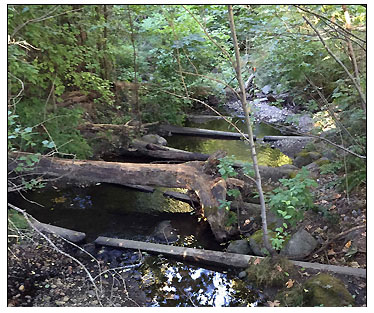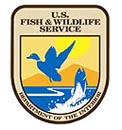The geocache is not at the posted coordinates. Read the page to figure out the correct coordinates to find the cache.

Idylwood Creek starts in Bellevue and flows downhill through Redmond into Lake Sammamish at Idylwood Park. This popular park offers a variety of recreational activities and hosts more than 42,000 visitors during the summer. The park's land was acquired in the mid-1990s, and a multi-year development plan has improved its public facilities while preserving the natural environment, including Idylwood Creek and nearby wetlands.
Kokanee had not been seen in the creek for decades until Redmond completed a restoration project here. In November and December 2012, approximately 25 kokanee were observed spawning in the lower part of the creek within Idylwood Park.
To determine the correct cache coordinates, read the interpretive sign "Restoring Idylwood" at the posted coordinates and answer the questions below. Match the correct North coordinates with the correct West ones to get the complete final coordinates.
- Idylwood Creek's watershed has become increasingly developed with residential neighborhoods. Which of these is not a problem created by the development?
A. Decreased water quality = N 47° 38.633
B. Reduced water flow = N 47° 38.556
C. Increased erosion along stream banks = N 47° 38.592
D. Reduced habitat for fish and wildlife = N 47° 38.497
- The City of Redmond did a two-phase project in 2002 and 2005 to address these problems and return the creek to a more natural state. Which of these is not one of the four ways the creek has been restored thus far?
A. Diverting and dispersing high-water flows with a pipeline. = W 122° 06.213
B. Improving fish passage to the upstream portion of the creek with weirs. = W 122° 06.097
C. Adding gravel near the stream mouth to improve fish access. = W 122° 06.262
D. Placing wood and boulders in the creek to stabilize banks and slow water flow. = W 122° 06.036
E. Restoring native plants to the creek banks to provide shade, cooler water, and erosion control. = W 122° 06.165
The Cache: The cache location has a nice view of the stream and some of the improvements, including weirs. You don't need to leave the trail or hop any fences.

This cache was placed with the permission and support of the City of Redmond.


Unlike other salmon, the Lake Sammamish kokanee salmon lives its entire life in fresh water. Kokanee spawn in tributary creeks, and their offspring migrate to the lake as they mature, then return to their home creeks as adults to spawn the next generation.
Historically, the kokanee filled a critical ecological role within the Lake Sammamish watershed and was an important food and cultural resource for local tribes. But this "little red fish" has experienced a dramatic decline, leading to near-extinction in recent years.
To address the kokanee's plight, citizens, landowners, nonprofit agencies, and local, state, tribal, and federal governments have united to restore native kokanee salmon populations and the ecological integrity of the greater Lake Sammamish basin. In 2013, this group received an Urban Wildlife Refuge Partnership (UWRP) designation from the U.S. Fish and Wildlife Service, one of the first in the country.
The Kokanee Quest was sponsored by the Lake Sammamish UWRP, a consortium led by the King County Department of Natural Resources and Parks (KC DNRP) and the U.S. Fish and Wildlife Service (USFWS).


